Teotihuacan Treasures on Display in San Francisco Museum
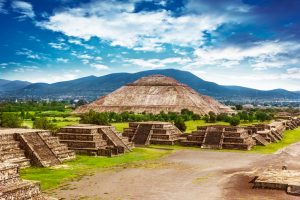 The MesoAmerican ruins of Teotihuacan, located outside of Mexico City, are one of the world’s most visited archaeological sites and among the largest cities in the ancient Americas. Archeologists knew little about this mysterious culture and its people until a chance discovery some 11 years ago. Unusually heavy rains formed a sinkhole, which led scientists to a massive tunnel 60 feet below the temple complex. Over the next decade archeologist Sergio Gómez Chávez and his team unearthed a treasure trove of artifacts dating back more than 1,800 years, some of which are currently on exhibit at San Francisco’s de Young museum.
The MesoAmerican ruins of Teotihuacan, located outside of Mexico City, are one of the world’s most visited archaeological sites and among the largest cities in the ancient Americas. Archeologists knew little about this mysterious culture and its people until a chance discovery some 11 years ago. Unusually heavy rains formed a sinkhole, which led scientists to a massive tunnel 60 feet below the temple complex. Over the next decade archeologist Sergio Gómez Chávez and his team unearthed a treasure trove of artifacts dating back more than 1,800 years, some of which are currently on exhibit at San Francisco’s de Young museum.
Treasure trove discovered in Teotihuacan
Among the captivating items discovered were crystals fashioned into eyes, ornate jade statues and necklaces made of human and crocodile teeth. Within the tunnel lay an incredible man-made landscape filled with miniature mountains, walls embedded with fool’s gold (powdered pyrite) and pools of liquid mercury.
This subterranean discovery offered clues about this once populous metropolis, which has been shrouded in mystery for centuries. At its peak, Teotihuacan was home to more than 200,000 residents and covered 21 square miles, making it the biggest city in the western hemisphere.
The name Teotihuacan translates to “birthplace of the gods,” a title bestowed by the Aztecs who revered the stunning architecture of the Pyramids of the Sun and Moon.
For those who are unable to visit this magnificent UNESCO World Heritage Site in Mexico, the exhibit ‘Teotihuacan: City of Water, City of Fire’ will be on view at San Francisco’s de Young museum until February 11, 2018.
Teotihuacan exhibit in San Francisco
This exhibit marks the first display of Teotihuacan artifacts on the U.S. mainland for more than 20 years. Organized through a joint partnership between San Francisco’s Fine Arts Museums and Mexico’s Instituto Nacional de Antropología e Historia (INAH), the exhibit will feature never-before-seen relics, ceramics, paintings, mural fragments, and stone sculptures along with ritual items from the site’s three pyramids. The exhibition will provide a unique opportunity for audiences to learn more about the ancient city of Teotihuacan and its role in Mexico’s cultural landscape.
The exhibit contains 200 artifacts crafted from a variety of materials, including jade, marble, obsidian, alabaster, green stone, slate, shells, lime and volcanic rock. Many of these discoveries are thought to have religious significance, perhaps being used for ritual ceremonies and events.
The de Young exhibit will also feature four greenstone statues adorned with garments and beads, believed to be the earliest shamans of Teotihuacan.
While these impressive archaeological discoveries shed light on this once powerful cultural center, many mysteries remain.
Additional Teotihuacan Resources:
- The Guardian, Lakes of mercury and human sacrifices – after 1,800 years, Teotihuacan reveals its treasures https://www.theguardian.com/artanddesign/2017/sep/24/teotihuacan-pyramids-treasures-secret-de-young-museum-san-francisco
- KQED.org, Recently Discovered Treasure Trove in ‘Teotihuacan’ https://ww2.kqed.org/arts/2017/10/12/de-young-hosts-recently-discovered-treasure-trove-in-teotihuacan/
- SmithsonianMag.com, Secret Tunnel Found in Mexico May Finally Solve the Mysteries of Teotihuacán https://www.smithsonianmag.com/history/discovery-secret-tunnel-mexico-solve-mysteries-teotihuacan-180959070/

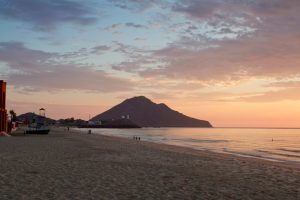 In search of the perfect destination for sunshine, warm, swimmable waters, and miles of unspoiled beaches? Welcome to
In search of the perfect destination for sunshine, warm, swimmable waters, and miles of unspoiled beaches? Welcome to 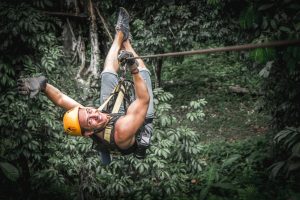 Ecotourism combines the best of environmental conservation and responsible tourism, offering travelers a unique cultural experience. Mexico, like many Latin American countries, has become one of the top destinations for eco-minded travelers who want to explore the great outdoors and marvel at Mother Nature’s wonders, with minimal impact on local communities.
Ecotourism combines the best of environmental conservation and responsible tourism, offering travelers a unique cultural experience. Mexico, like many Latin American countries, has become one of the top destinations for eco-minded travelers who want to explore the great outdoors and marvel at Mother Nature’s wonders, with minimal impact on local communities.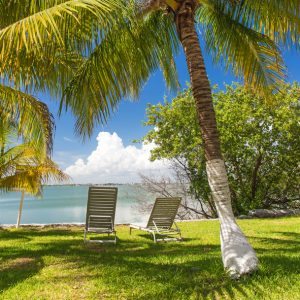 Discover the amazing natural treasures of Nichupte Lagoon, which plays a starring role in many of today’s Cancun vacations. Featuring seven different lakes and a winding network of beautiful canals, this impressive lagoon spans over 3,000 acres, and offers the perfect backdrop for a wide array of water sports, mangrove excursions and chances to catch big fish on light tackle. Nichupte Lagoon, one of the most spectacular natural attractions on the Mexican Caribbean, is visited by thousands of travelers each year. Here, you can revel in the stunning landscapes, clear waters and lush estuaries brimming with colorful birds, frogs, turtles, iguanas, caiman, and tree-dwelling mammals.
Discover the amazing natural treasures of Nichupte Lagoon, which plays a starring role in many of today’s Cancun vacations. Featuring seven different lakes and a winding network of beautiful canals, this impressive lagoon spans over 3,000 acres, and offers the perfect backdrop for a wide array of water sports, mangrove excursions and chances to catch big fish on light tackle. Nichupte Lagoon, one of the most spectacular natural attractions on the Mexican Caribbean, is visited by thousands of travelers each year. Here, you can revel in the stunning landscapes, clear waters and lush estuaries brimming with colorful birds, frogs, turtles, iguanas, caiman, and tree-dwelling mammals.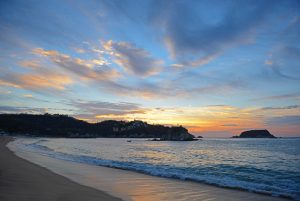 When you think “Mexico” and “vacation,” you may also think “winter” or even “Spring break.” After all, the last two are the most popular times to enjoy the sun and fun south of the border.
When you think “Mexico” and “vacation,” you may also think “winter” or even “Spring break.” After all, the last two are the most popular times to enjoy the sun and fun south of the border.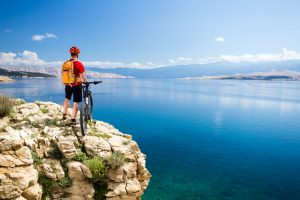 At some point, most serious cyclists start dreaming of hitting the trails in Mexico. Much of the highways in Mexico aren’t necessarily ideal for cycling—very narrow shoulders—but most cyclists flock to Mexico for the backcountry views anyway. If you plan to hit the trails with a mountain bike, be sure to bring extra tubes and a well-stocked repair kit.
At some point, most serious cyclists start dreaming of hitting the trails in Mexico. Much of the highways in Mexico aren’t necessarily ideal for cycling—very narrow shoulders—but most cyclists flock to Mexico for the backcountry views anyway. If you plan to hit the trails with a mountain bike, be sure to bring extra tubes and a well-stocked repair kit.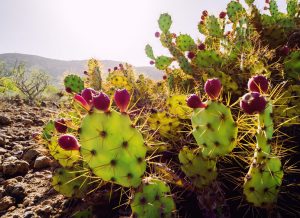 Few plants are as versatile as the prickly pear cactus, known as nopal in Spanish. Its delicious fruits are roasted, grilled, broiled, eaten raw, pureed, and juiced, and it’s the starring ingredient in a range of consumer products—from shampoo to medications. The humble cactus was revered by the ancient Aztecs—there’s even a cacti legend associated with the ruins of Tenochtitlan (a must-see sight for any visitor to Mexico City). But recently, it was discovered that the prickly pear cactus might have yet another use—a renewable energy source of the future.
Few plants are as versatile as the prickly pear cactus, known as nopal in Spanish. Its delicious fruits are roasted, grilled, broiled, eaten raw, pureed, and juiced, and it’s the starring ingredient in a range of consumer products—from shampoo to medications. The humble cactus was revered by the ancient Aztecs—there’s even a cacti legend associated with the ruins of Tenochtitlan (a must-see sight for any visitor to Mexico City). But recently, it was discovered that the prickly pear cactus might have yet another use—a renewable energy source of the future. There are dozens of stunning beach destinations in Mexico, but few that promise the natural beauty and provincial charms of
There are dozens of stunning beach destinations in Mexico, but few that promise the natural beauty and provincial charms of 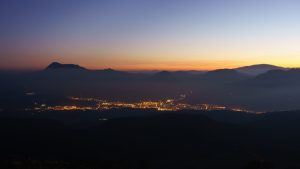 Mexico is a top destination for people looking for world-class entertainment. The country has a long, rich history of producing notable stars in entertainment, including Ricardo Montalban, Carlos Santana, and Dolores del Rio. In fact, Dolores del Rio was widely regarded as being the first Latino woman to make it in Hollywood. Google Doodle honored her recently by showcasing an illustration of del Rio surrounded by flowers on Google’s homepage. If you’re a film buff, consider visiting del Rio’s birthplace during your visit to Mexico. Durango City is impressive any time of the year, but consider planning your trip during mid-to late-July to early August for the annual festival, and be sure to check out other exciting festivals happening around the country.
Mexico is a top destination for people looking for world-class entertainment. The country has a long, rich history of producing notable stars in entertainment, including Ricardo Montalban, Carlos Santana, and Dolores del Rio. In fact, Dolores del Rio was widely regarded as being the first Latino woman to make it in Hollywood. Google Doodle honored her recently by showcasing an illustration of del Rio surrounded by flowers on Google’s homepage. If you’re a film buff, consider visiting del Rio’s birthplace during your visit to Mexico. Durango City is impressive any time of the year, but consider planning your trip during mid-to late-July to early August for the annual festival, and be sure to check out other exciting festivals happening around the country.